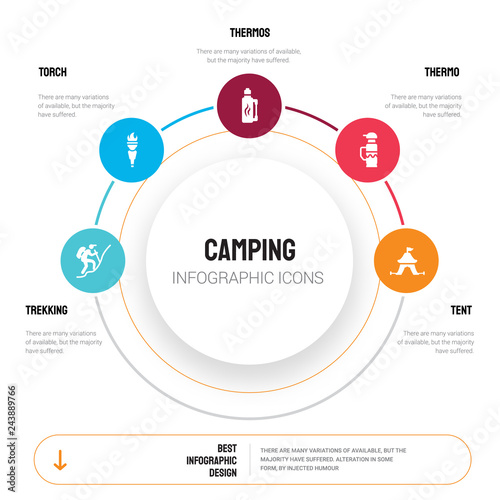Wintertime camping is a fun and daring experience, however it calls for appropriate gear to guarantee you stay cozy. You'll need a close-fitting base layer to catch your temperature, together with an insulating jacket and a waterproof shell.
You'll additionally need snow risks (or deadman supports) hidden in the snow. These can be linked making use of Bob's brilliant knot or a regular taut-line drawback.
Pitch Your Tent
Winter camping can be an enjoyable and adventurous experience. Nevertheless, it is necessary to have the correct gear and recognize just how to pitch your outdoor tents in snow. This will avoid cold injuries like frostbite and hypothermia. It is also important to eat well and stay hydrated.
When establishing camp, see to it to select a site that is sheltered from the wind and free of avalanche danger. It is additionally an excellent idea to pack down the location around your outdoor tents, as this will certainly help reduce sinking from body heat.
Prior to you established your camping tent, dig pits with the same size as each of the support points (groundsheet rings and guy lines) in the facility of the camping tent. Fill these pits with sand, stones or perhaps stuff sacks filled with snow to small and protect the ground. You might additionally intend to think about a dead-man support, which involves linking tent lines to sticks of wood that are hidden in the snow.
Pack Down the Area Around Your Camping tent
Although not a need in a lot of locations, snow risks (also called deadman supports) are an exceptional addition to your camping tent pitching package when camping in deep or pressed snow. They are primarily sticks that are created to be hidden in the snow, where they will ice up and develop a solid support factor. For finest results, utilize a clover hitch knot on the top of the stick and bury it in a few inches of snow or sand.
Set Up Your Outdoor tents
If you're camping in snow, it is a good idea to use a tent designed for winter season backpacking. 3-season camping tents work fine if you are making camp below timberline and not expecting especially severe weather, but 4-season outdoors tents have tougher poles and fabrics and offer more security from wind and heavy snowfall.
Be sure to bring sufficient insulation for your sleeping bag and a warm, completely dry blow up floor covering to sleep on. Blow up floor coverings are much warmer than foam and assistance avoid cold spots in your tent. You can also add an extra mat for sitting or cooking.
It's additionally a great idea to set up your tent near an all-natural wind block, such as a group of trees. This will make your camp extra comfy. If you can't find a windbreak, you can develop your very own by digging holes and hiding things, such as rocks, camping tent stakes, or "dead man" anchors (old outdoor tents person lines) with a shovel.
Tie Down Your Tent
Snow risks aren't needed if you utilize the appropriate methods to anchor your outdoor tents. Hidden sticks (maybe accumulated on your technique hike) and ski posts work well, as does some variation of weather resistance a "deadman" hidden in the snow. (The idea is to develop an anchor that is so strong you will not be able to pull it up, even with a great deal of initiative.) Some producers make specialized dead-man anchors, yet I choose the simpleness of a taut-line hitch tied to a stick and after that buried in the snow.
Understand the surface around your camp, specifically if there is avalanche danger. A branch that falls on your camping tent might harm it or, at worst, wound you. Additionally be wary of pitching your tent on a slope, which can trap wind and cause collapse. A protected location with a reduced ridge or hillside is far better than a high gully.
